


The Cold War was a time of deep tension as America fought a philosophical battle against the Soviet Union. The threat of armed conflict and nuclear tension was high between the two towering nations, with numerous proxy wars and close calls. Those troubling possibilities were thankfully never realized, but video games offer unique opportunities to explore that world gone hot. Eugen Systems and Focus Interactive do just that in an alteranative 1985 with Wargame: AirLand Battle, a real-time strategy game and sequel to 2012's Wargame: European Escalation, where NATO and PACT forces battle for control of a war-torn Europe. But unlike other games of the genre, Wargame's scale is massive and with a keener focus that beginners and veterans can equally enjoy.
Wargame: AirLand Battle doesn't follow the traditonal real-time strategy format. It focuses almost entirely on the battles themselves and the tactics therein rather than the mining of metals and construction of bases. This is arguably in its favor, because it gets to the core of what we love in a real-time strategy game: managing armies and seeing the destruction they cause. This also has the benefit of allowing those of us who are less nimble with fingers the hope of success. Speed does not matter in AirLand Battle as it does in other games. Instead, the onus is on how you compose, position and manage your units in battle. It's more methodical, but it's not a watered down experience.
Similar to 2007's World in Conflict, units are called onto the map via a pool of deployment points. Every unit has a cost associated with their deployment. More powerful ones are naturally more expensive. Those points are gained through battle as you destroy enemy units and automatically every few seconds, the latter amount depending on how many domination zones your team controls. Depending on the game mode, victory points - their title should require no definition - are gained similarily.
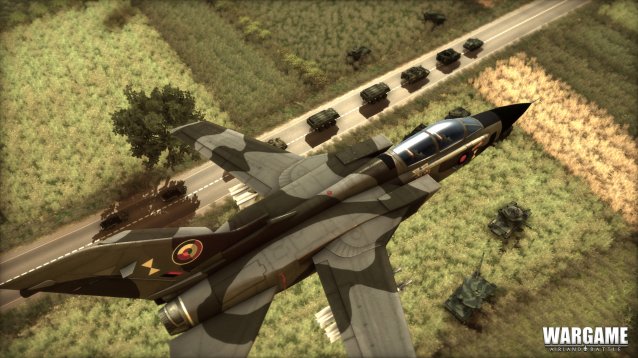
Earning enough victory points may be the ultimate goal, but managing your armies to get there is easier said than done. A great deal of AirLand Battle's depth comes from a healthy amount of realism they've infused into its mechanics. Every unit has a limited amount of fuel and ammunition. They have differing values for armor, armor penetration, the distance they can detect enemies, range of operation, morale and a dozen different statistics. It's almost too much to take in at a glance, made more difficult by the abundant use of military shorthand. Memorizing them isn't as critical to success as two other core concepts, however.
AirLand Battle's maps are full of small towns, forests, plains and broken sight lines. These provide a lot of cover and potential chokepoints and it's important to use them to your advantage. That's right, it's a real-time strategy game with cover mechanics. Units in the open are not only more visible but less likely to avoid attacks, as well. If they get shelled too hard they can even become stunned and unable to retaliate.
Equally important is what you fill those maps with. Without a balanced variety of units, lines will quickly crumble. It may seem fun to call in dozens of heavy tanks, but they won't be able to hit what they can't see unless you reinforce them with scouts. Every role is important. And thanks to its slant toward realism, there's a weight to each pawn on your board. Losing one can really hurt, making each battle - and the silence before the storm as everyone moves into position - tense and exciting at the same time in a way other real-time strategy games lack.
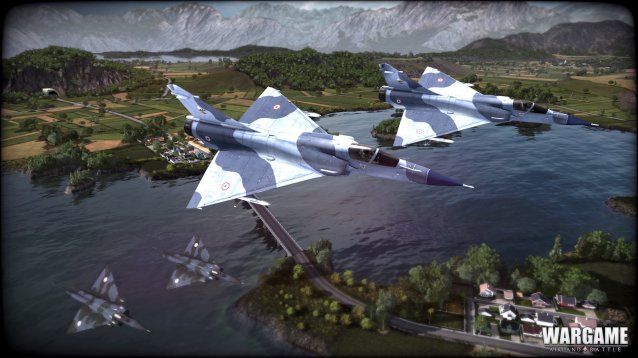
The game differentiates itself from the pack with one other unique feature not usually associated with the genre. Instead of being able to call in every available unit of your faction, you actually have to select a preset or build your own deck. This is reminiscent of how certain card games work. And each "card," such as adding an M1A1 Abrams tank to your deck, has a limited supply of reinforcements. With over 700 units to choose from and a limited number of slots in a deck, there's a huge amount for personlization. Part of what makes the Wargame series so fun is exploring this system, tweaking them after each battle to see what works and doesn't. AirLand Battle has removed the star system of unlocking new units for use in a deck, however, which also removes some feeling of progression as leveling up doesn't appear to offer any actual rewards. But it's more of an ambivalent change rather than an unwelcome change due to the huge assortment of units available.
Its concepts, while robust, are not too difficult to grasp but it does have a fairly steep learning curve. It takes more than few hours to completely understand how those pieces fit together. In smaller, competitive matches, it can also be extremely difficult to rebound after an early loss. Their more limited resources often means a loss gives the enemy a decent lead that's hard to catch. Thankfully, the community is generally forgiving and helpful. And because what you do matters more than how fast you do it, it's easier to get acclimatized to the game's mechanics and feel like you can succeed rather than victory appearing as a distant dream.
Players from Wargame: European Escalation will certainly have less trouble adjusting to how AirLand Battle is played, but its additions do change how its engagements are fought and planned. Planes add a new dynamic to the battlefield. These are units that are fast, can come out of nowhere and decimate forces on the ground with their rockets and bombs. As a result, army composition requires a great deal more thought. Anti-aircraft defenses, which had felt somewhat lacking due to helicopters being the only aerial threat in European Escalation and the ability of other units to bring them down, now are the bread and butter of a solid defense. There's a synergy and balance across the breadth of unit types that didn't quite exist before.
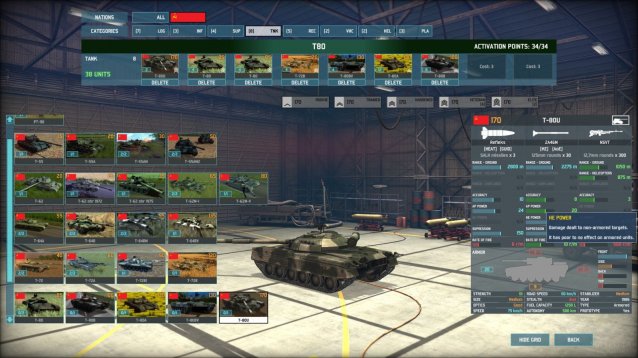
While those new toys are welcome, the new 10v10 multiplayer mode can be less entertaining for those that enjoy meaningful mistakes and hard, tactical decisions. Those elements are still present, but they're muted by the sheer scope of its battles. Losing your initial forces won't cost the team the game. With so many players and higher deployment points available, there's room for loss. Unfortunately, it's not uncommon to see certain units being spammed, a strategy that can't quite be done with success in the more tightly competitive modes. Don't be surprised if you're constantly being bombarded by artillery strikes and a dozen jets.
Even in defeat, the game lessens that sting with its gorgeous visuals. Every tank and plane and piece of artillery is just as detailed as the statistics that rule them. You can zoom all the way down to view the world from a soldier's perspective, to appreciate the high resolution textures and lush European landscapes, or all the way to the clouds to take in the absolutely massive scale of its maps. Battles are fought across kilometers; and though 10v10 isn't as rewarding for the brain as smaller matches, they light up those long stretches of land in a glorious spectacle.
A single-player campaign returns with a new take in AirLand Battle. Gone is a structured, linear story in favor of a more open design similar to RISK. There are four missions split between NATO and PACT objectives, but "missions" is too strict a word. The ultimate goal of each is to simply conquer specific territories on a map consisting of Norway, Sweden and Denmark with the armies you've been given and in a certain amount of time. It's an interesting direction, though one that comes across a little too thin. The pure focus is on the battles, which are no different than a simple skirmish against bots, with few other mechanics to enhance the campaign.
Even with its additions, the package as a whole does feel a bit more like an expansion pack than a true sequel. There's not much in it that doesn't seem like it couldn't have been added to the original game that was released little more than a year ago. It still largely plays and looks the same with certain changes eliciting a more ambivalent response than an excited one. But it is the definitive version of Wargame. New players will want to start here and veterans will enjoy all the new maps and vehicles.
Wargame: AirLand Battle is an absolute delight to play and behold. It gets to the heart of what makes the genre exciting - its battles - and eliminates micro-management that can often push players away while still providing an incredibly rich experience for deep-in-thought armchair generals. It may not feel like the perfect sequel, but it remains one of the more tactically rewarding real-time strategy games on the market today.
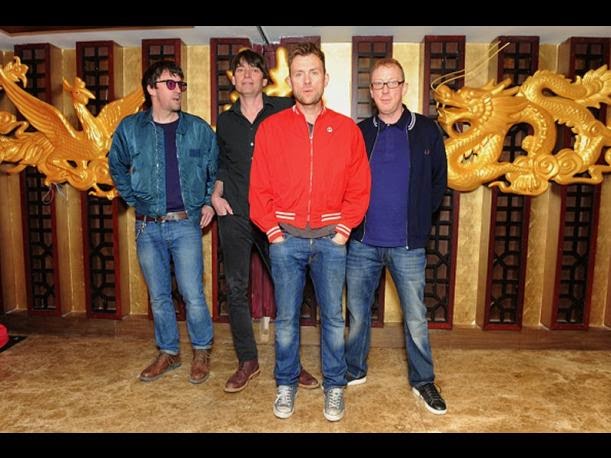


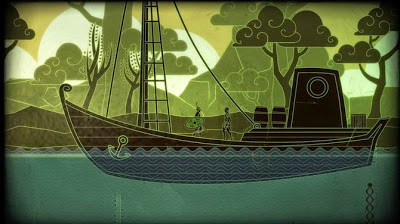
 How to find Remote Electrical Charge gadget in Batman: Arkham knight
How to find Remote Electrical Charge gadget in Batman: Arkham knight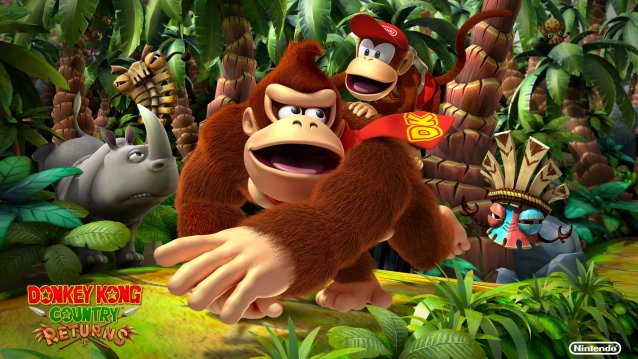 Donkey Kong Country Returns Wallpapers in HD
Donkey Kong Country Returns Wallpapers in HD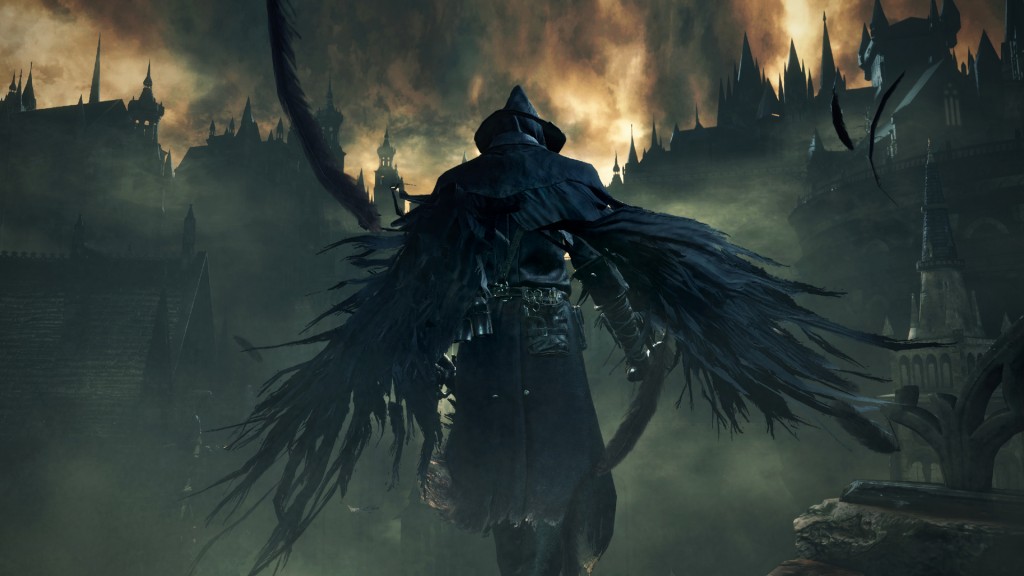 Bloodborne Guide: Insight Level Changes Detailed; How to Gain and Lower Insight
Bloodborne Guide: Insight Level Changes Detailed; How to Gain and Lower Insight Defiance Beginner’s Guide
Defiance Beginner’s Guide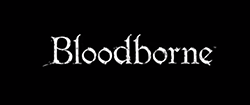 Bloodborne PS4 Progress Route Guide Including Optional Bosses and Chalice Dungeons
Bloodborne PS4 Progress Route Guide Including Optional Bosses and Chalice Dungeons